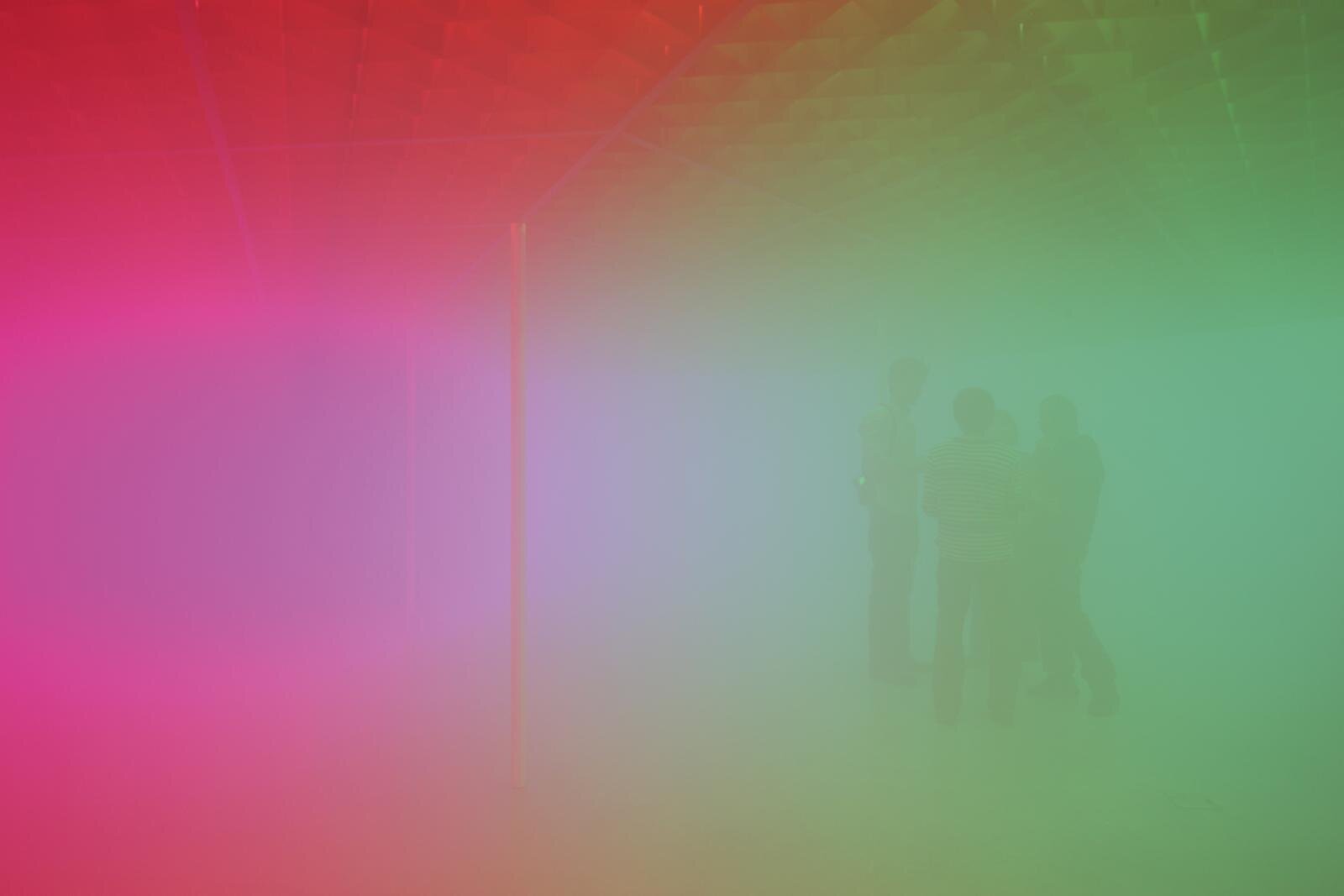These days Danish artist Olafur Eliasson is described as an arts corporation rather than an artist. Not that this is meant to be derogatory – far from it. But he appears to have an imagination on an industrial scale, his studio now employs 100 people and he has branched out into the fields of architecture, engineering, product design and global politics. He is also a passionate advocate for action on climate change.
He is consumed by the concept of space, how we interpret it and interact with it.
“What makes a space productive, makes it tolerable, challenging, exciting, including, hospitable and so on? I aim to challenge an existing space by introducing some qualities and amplifying those qualities into the space. It is not like starting with a blank canvas as the space is already charged with meanings and intentionalities.
“It’s important to ask to what extent do we have an impact on our world, to participate or not participate? Does it matter that we are here in the first place?”
Beauty 1993, Nozzles attached to a punctured hose spray a fine mist into light.
“When I make something that may be a work of art, I want it to be in the world, to be sincerely, responsibly and honestly in the world….to have an impact somehow.”
Eliasson describes his studio as a laboratory where he and his collaborators experiment a lot and try out ideas. He says the studio needs to embrace doubt that something may not be working, that it may turn into nothing.
One of his most significant early works was the Weather Project installed in the massive turbine hall of London’s Tate Modern in 2003.
Critic Waldemar Januszczak credits Eliasson with bringing the outdoors inside. People were turning up at the Tate with beach towels so they could lie on the floor and see themselves being reflected on the foil covered ceiling.
“When I work with a project, I ask how is the work being constituted, who determines whether it’s real or not? And I want to hand that determination to the spectator. Which means I need to include the spectator into the objecthood. How do people allow themselves to get involved with their surroundings?”
New York City Waterfalls, 2008
He allows a project to evolve over time, he does not have a fixed picture of how a project would appear in its final form from the outset.
“I do not claim sole authorship of the project, I rely on the audience, the context, the quality of the situation to claim authorship. If I set out a Utopian vision and tell people what to expect I would limiting, I would be normative and I would be commodifying the project.
“I often talk about making a machine that produces a phenomena and it’s the relationship people develop with that phenomena that is interesting to me. I like to show people how this machine works so they can coproduce the work with me.”
By doing this, Eliasson hopes to make a world that is more open, more negotiable and inclusive rather than exclusive. He aims to make art that is inclusive rather than exclusive.
Your Chance Encounter, 2009, a mist filled room with different coloured lights in different areas
“My interest goes in the way of participating in a dialogue and I see my work as a response to something I see in the world and I use my studio to amplify my response.
“The unique quality of the language that art speaks is that it doesn’t take the world for granted, it looks at the world as if the world is a model, that it’s a constructed world and there is not an objective truth out there. If you successfully start a dialogue with that world then you can change that reality, make it negotiable.”
Eliasson also appears to be a humanitarian.
“A work of art can embrace different people having different experiences at the same time. Where else in society does this happen? And where in society is this embraced as a good thing? If you are different you are typically, in the world I live in, not welcome. Art can show that this is wrong and investigate this in a productive way and constitute a community that is based on differences – being part of a group and yet being able to work as an individual.”
Your Rainbow Panorama, 2011, ARoS Museum of Art, Denmark
“It’s about the balance between form and content which allows you to solve complex questions. It‘s possible to get caught up with form and forget about content ie. what is this about, where does it go, how do people engage with it and why? So the form needs to be secondary to the content. It is necessary to go out and research (workshop) the content and then return to the studio.”
There is a retrospective of Eliasson’s work on show at Tate Modern until January 5, 2020.
References; ‘Space Is Progress’, JJ Films, 2009
Waldemar.TV – Eliasson In Real Life, Tate Modern









